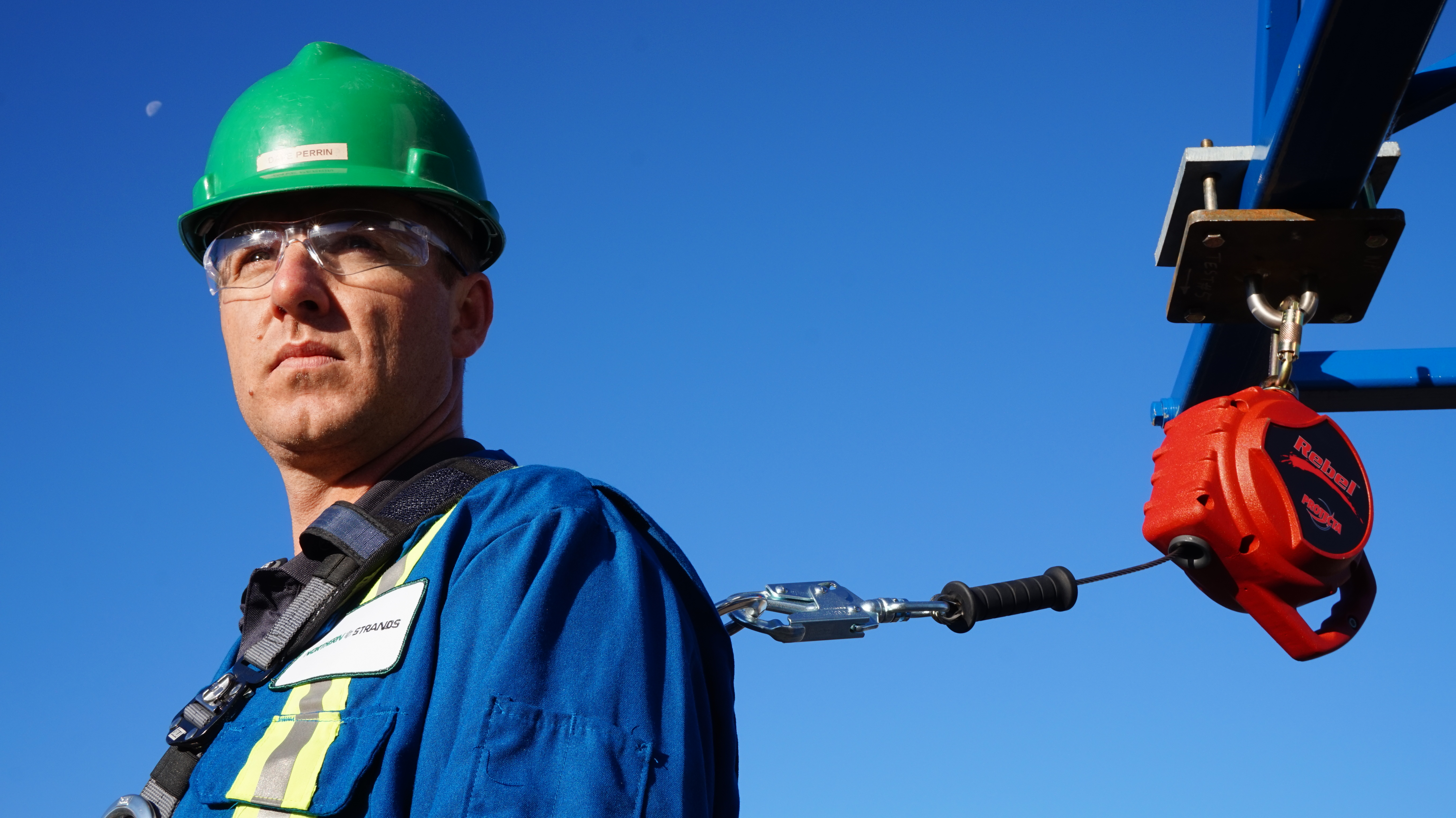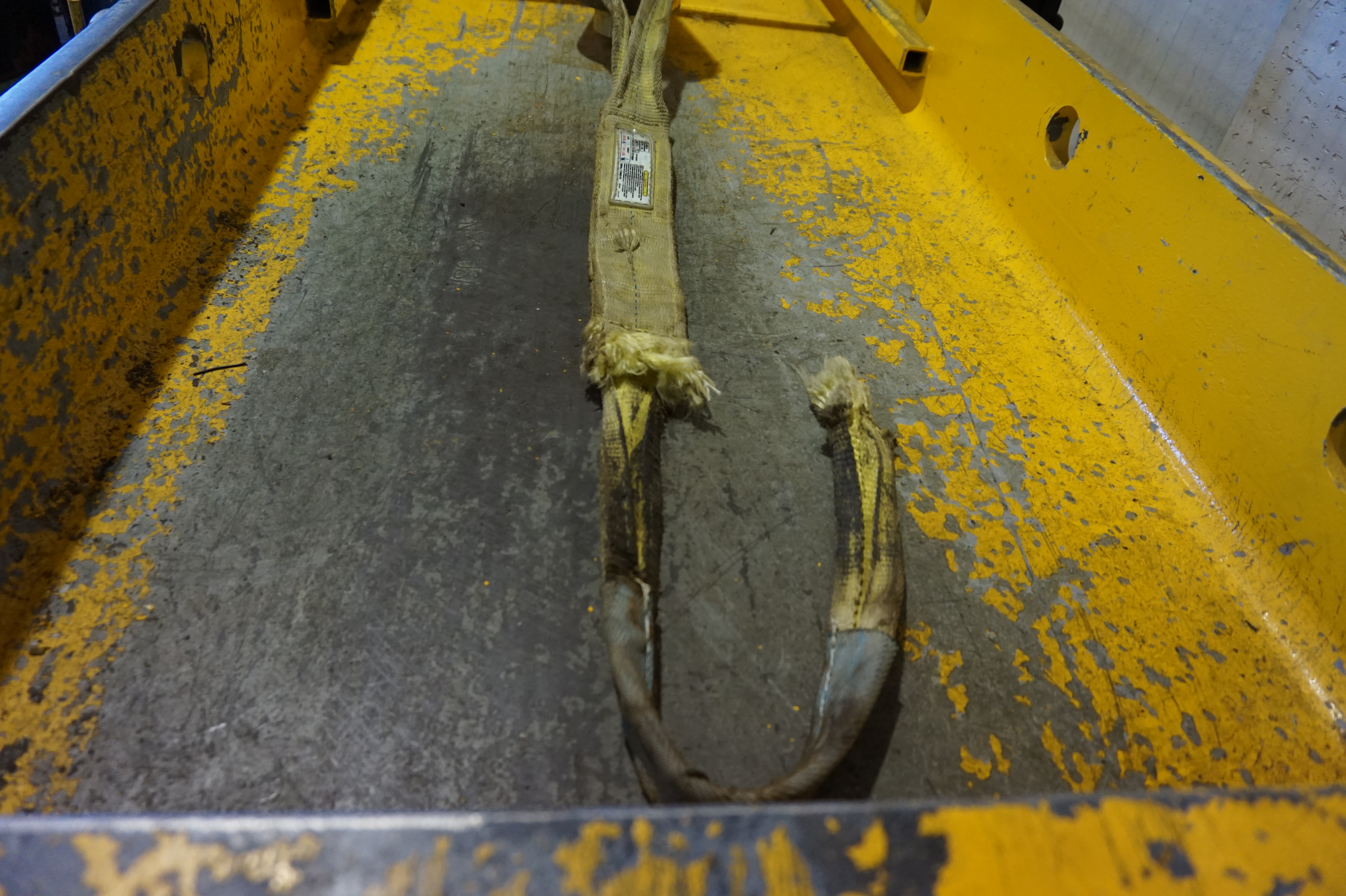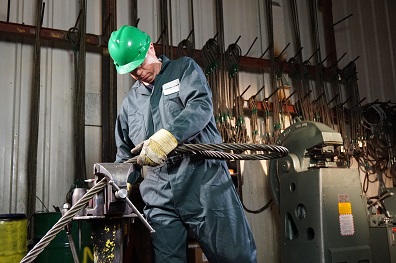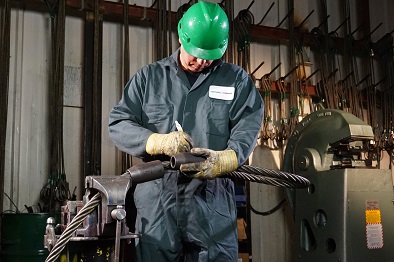What is Dyneema? Dyneema rope is a brand name of synthetic rope that is made from Ultra High Molecular Weight Polyethylene (UHMWPE), which is the world's strongest fiber and gives it an ultra high breaking strength.
How Strong is it? Dyneema rope is very strong. It is 20% stronger than wire rope of the same size and 7 times stronger than wire rope of the same weight.
What about Abrasion? Dyneema has the highest abrasion resistance out of any synthetic rope in the industry and is widely used in Canada by trans-oceanic shipping companies for towing and mooring their massive container ships. In Saskatchewan and the prairies Dyneema rope is most often used on ATV winch cable, flat deck winch cable and tow trucks winch cable.
Why does this matter? Northern Strands supplies tow ropes, ATV winch lines and other accessories made from Dyneema ropes for those occasions where you need the strongest rope available and don't want to lift a big heavy wire rope. Northern Strands manufactures winch lines with hook made from Dyneema that make use of a standard eye hook for attaching to anchor points when a vehicle such as a ATV Quad or Side by Side gets stuck to the point where it needs to be winched out. The advantages of using Dyneema in these situations are huge as the rope is not only immensely strong.
Additional properties of Dyneema rope
- Incredibly light, Dyneema will float on water.
- Literally a rope, which means that it does not kink or tangle like wire rope does, especially on the smaller drums of a quad winch, and there is no risk of puncturing your skin from a broken wire.
- The same material used in the most ultra-modern body armour that is currently preferred to Kevlar as it performs the same wet or dry.
- Woven instead of wound; meaning that Dyneema rope is torque neutral, where wire rope will unwind when subjected to extreme loads.
Northern Strands carries a number of assembled winch lines with hook for sale:
- 3/16", 50' and 100' winch lines with a breaking strength of 5,400 lbs
- 1/4", 50' and 100' winch lines with a breaking strength of 8,200 lbs
- 5/16:, 50' and 100' winch lines with a breaking strength of 11,970 lbs
We can also create custom lengths and assemblies

For more information on Dyneema Rope visit us at:
3235 Millar Ave, Saskatoon, SK S7K 5Y3
306-242-7073
The Term MAF, also known as Maximum Arrest Force, comes directly from Section 102 of The Occupational Health and Safety Regulations, 1996 under clause (c) which states that "An employer or contractor shall ensure that a personal fall arrest system required by these regulations...applies a peak fall-arrest force not greater than eight kilo-newtons to a worker..."
A kilo-newton is a force that is equal to approximately 225 lbs-force. Where the Saskatchewan fall-arrest legislation states Max Arrest Force is 8kN, this is equal to 1800 lbs-force. So how do we abide by this legislation and what does it mean?
In the Northern Strands Fall Protection course, they train that Personal Fall Arrest Systems should be a last resort, but S102(c) was put in place to make sure that the risk of injury from the fall-arrest equipment itself is reduced.

There are 3 principal ways we can make sure that we don't exceed the MAF:
1) Keep Free Fall to a minimum - use the shortest possible lanyard, anchor well overhead, and use retractables.
2) Minimize Weight - limit the number of tools that will be supported by the full-body harness.
3) Use the Most Distance possible to come to a stop.
This last point might be hard to imagine, but picture it like this: would you rather bring your vehicle to a stop using brakes over a distance of a block, or would you rather bring your vehicle to a stop against a brick wall? The energy of any moving object whether its a falling person or a moving vehicle has to be reduced gradually or there will be an excessive stopping (arresting) force put on the object.
These two controls are actually outranked by another. What about not performing the work at heights in the first place? Obviously this is not always a practical solution, but nonetheless its worth considering. Even trying to relocate certain job steps to the ground level is better and safer than performing 100% of the work at heights. Give us a call and we can help you out with some more proactive fall protection solutions.
Contact us at:
training@northernstrands.com
306-242-7073
When conducting work site inspections, audits, or periodic rigging inspections, it is not uncommon to have to take anywhere from 80% -100% of the synthetic web slings out of service. There are a large variety of reasons a synthetic sling, “gets itself” into such a state of disrepair, but one thing that comes up from time to time when you ask a sling’s user why it is still on the rack in a clearly damaged state, a typical response might be:
“Oh, well you can’t see the red marker threads, so I thought they were still good…?”
Unbeknownst to some, many synthetic slings can be cut completely in twain and there will be no evidence of the aforementioned “red marker threads” whatsoever.
Backstory: some sling manufacturers would weave a different colored thread into the web sling material as a way to warn users of excess wear/abrasion/etc. The idea was that sling users would be able to more quickly identify a worn out sling by seeing the different colored thread.
So now we can see the issue that I have with this: the manufacturers added a feature to help sling users identify worn web slings and then sling users eventually turned it into a Go/No-Go gauge. This is made even worse by the fact that many, many slings do not have red marker threads of any kind. And even when slings do have them there can be many other reasons to take a synthetic sling out of service before they become visible.
If you’re noticing a trend like this on your worksite inspections follow this link http://www.northernstrands.com/training.aspx and we can discuss how the Northern Strands Below the Hook Rigging Training program could help you and/or your workforce learn where to draw the line and take slings and other rigging out of service before they become a hazard.
 Why does rigging need a safety factor?
Why does rigging need a safety factor?Have you wondered why rigging experts always suggest a sling that has a significantly higher breaking strength than the actual weight of the load you are lifting? The manufacturers know that the rigging used in overhead applications need to have room for error. This is known as the Safety Factor.
Northern Strands manufactures wire rope slings rated up to 36,000 lbs and sells round synthetic slings that are rated up to 140,000 lb capacity. This capacity is the Working Load Limit of the sling, which is the maximum amount of weight or force that the sling's user is allowed to put on the sling. Note: These slings do not break at the working load limit. These slings are designed with a safety factor of 5:1. This means that 5 times as much force as the working load limit has to be applied to the sling before it potentially fails. This means the wire rope slings have a Breaking Strength of up to 180,000 lbs and the round synthetic slings can withhold up to 700,000 lbs.
Why are these capacities reduced by such a drastic degree?
Among others, here are 3 good reasons:
- Shock Loading - Unexpected drops where the load can accelerate and then must be 'caught' by the slings.
- Wear - Working load limits are based on slings in brand new condition and a safety factor can help account for normal wear and tear until it is deemed unfit for further use.
- Uneven loading - Slings are made up of either wires or fibers that must all share the weight of the load evenly. If any situation arises where the sling is bent or wrapped around an object, there is potential that some of the wires or fibers will be taking on a greater share of the load than others.
Visit Northern Strands website to use the sling tension calculator. The Northern Strands Sling Calculator has been designed to assist you in selecting slings with enough load carrying capacity for your lifting applications. It is your responsibility to assure that the slings you use are appropriate for your application. http://www.northernstrands.com/sling-calculator.aspx
To inquire about Rigging and Safety Factors, contact:
Northern Strands @ 306-242-7073
or Email info@northernstrands.com

Northern Strands is proudly Saskatoon, Saskatchewan owned and operated.
Did you know that Northern Strands is the largest manufacture of rigging products in Saskatchewan? Our Rigging Warehouse has the ability to manufacture many different types of custom wire rope and rigging products.
Here is a list of custom wire rope and rigging products our warehouse can manufacture:
- Spreader beams
- Lifting beams
- Material baskets
- Wire rope slings
- Man baskets
- Overhead lifting chain slings
- Transport chain assemblies
- Jib cranes
- Gantry cranes
- D-plates
- Synthetic tow cables
- Wire rope and synthetic winch lines
- Double braid tow rope
- Double braid nylon and polyester tow ropes
- 8 strand platted superdan tow ropes
- Polysteel fall protection lifelines
- Fall protection anchor slings
- Flemish eye wire rope slings
- Thimble eye wire rope slings
- Resin poured spelter sockets
- Four legged wire rope slings
- Three legged wire rope slings
- Two legged wire rope slings
- Multi legged wire rope slings
- Harrow cable assemblies
- Tow cables for tractors
- Draw bar assemblies
- Custom threaded studs
- Rail car puller wire rope
- Miscellaneous wire rope assemblies
- Overhead alloy chain assemblies
- Grade 100 overhead lifting chain assemblies
- Galvanized stainless steel wire rope assemblies
- Logging chokers
- Swagged sockets
We also fabricate custom lifting devices for mining, construction, agriculture industries.
Here are some examples of custom lifting devices we've produced:
- Custom plate lifters
- Coil lifters
Examples of products we've fabricated lifting devices for:
- Concrete blocks
- Secan containers
All of Northern Strands rigging products come with a certificate of compliance.
Northern Strands rigging division has technically trained sales staff that can assist you with the development of rigging and lifting plans.
Contact us today for a quote on your next custom wire rope or rigging product. Phone 306-242-7073, email sales@northernstrands.com or visit our website http://www.northernstrands.com/wire-rope-rigging.aspx
Did you know Northern Strands has been locally owned and operated for over 45 years?
